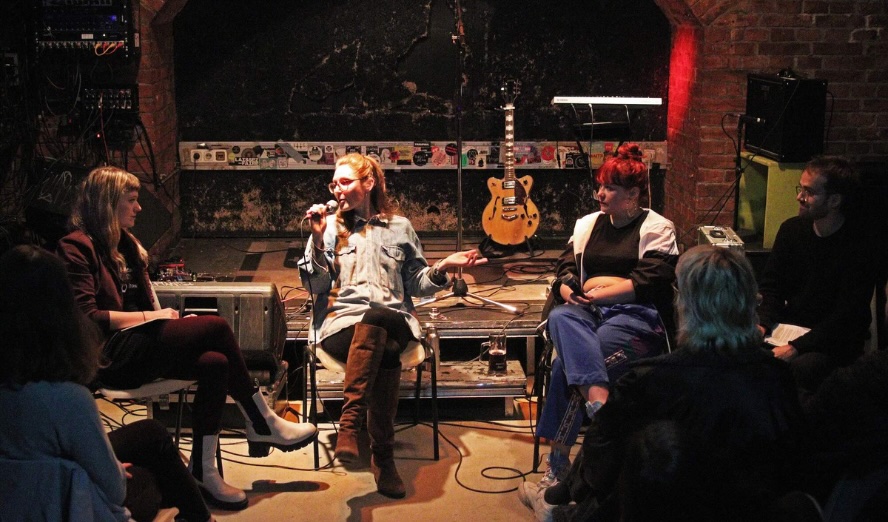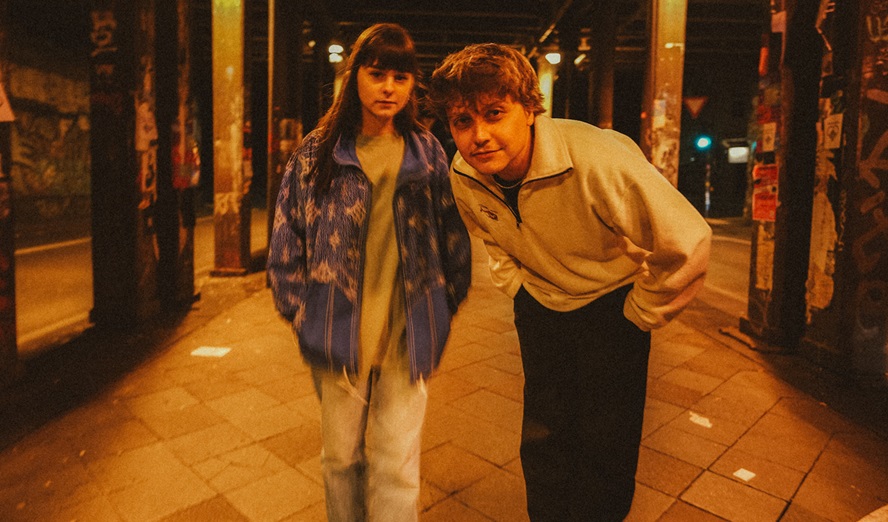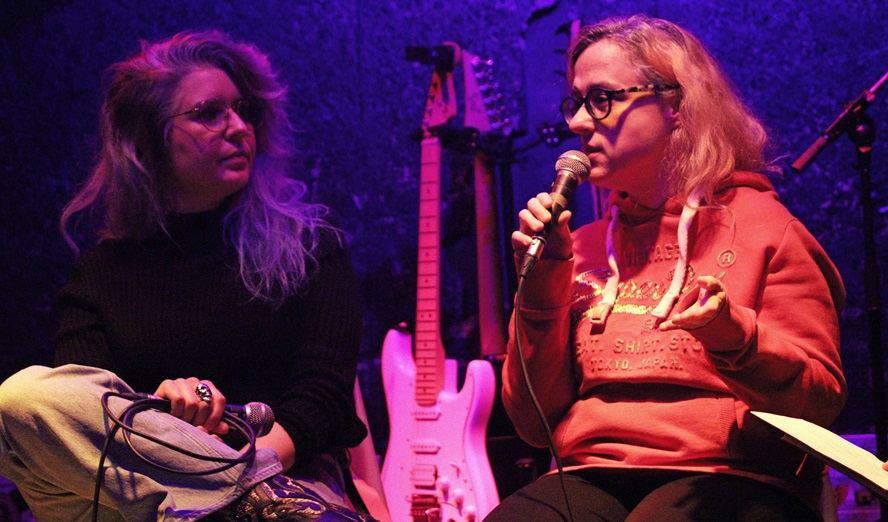Entrez-en scène Mesdames si vous le voulez-bien: Ida Cox, Lovie Austin, Memphis Minnie, Mary Lou Williams Girls stars, Dorothy Donnegan, Blue Lu Barker, Alberta Hunter, Trixie Smith, Tampa Red, Mary Osborne, Carol Kaye, Ethel Waters, Valaida Snow, The Hip Chicks, Ina Ray Hutton, Emma Barrett, Dyer and Dolly Jones, Sister Rosetta Tharpe, Bessie Smith, Mamie Smith, Lucille Hegamin, Mary Stafford and her Jazz Band, Ma Raney, Una Mae Carlisle, … Et l’on m’excusera ici pour toutes celles que je n’ai pas encore citées. Mais alors il y aurait eu de toujours de grandes artistes au feminin? (Se demande le moderne individu …) – Sincèrement, si l’on en était pas rendus à de tels oublis, j’aurais le plaisir de vous suggérer d’aller voir. Oui, de tous temps des femmes ont inventé, joué, chanté, dirigé, et les débuts de l’histoire de la grande musique noire ( puis blanche) américaine sont là pour le prouver. Je dirai même plus, non seulement les femmes y on tenu un rôle tout aussi central que celui des hommes mais même, c’est aux années 20 ou 30 qu’il faut réclamer les ancêtres de celles qui sont maintenant sur nos écrans et platines. Oui les Madonna, les Kylie, les Chicks, les Missy ou les Britney sans oublier les Lydia ou Diamanda, ont une histoire. Au fond ce qui me motive, au delà de mon propre plaisir d’évoquer pour vous toutes ces artistes qui depuis des lustres sont mes idoles, c’est ce sérieux trou de mémoire qui fait que jamais je n’ai vu une jeune femme arborer fièrement un tee-shirt où l’on pourrait reconnaître des Mary Lou Williams, des Trixie Smith ou encore des Tampa Red ou Bessie Smith. Mesdemoiselles et Mesdames, et si vous échangiez les idéologies un court moment pour voir? Allez, tous les garçons font un petit effort et portent à leur tour des »Lovely«, des »Bitch« ou »My Boyfriend is away Tonite«. Biensûr parlons ici d’Angela Davis, Hannah Arrendt, Rosa Luxemburg surtout, ou de ma favorite, Antoinette Fouque. Mais puisqu’il est ici question de spectacle et de musique, rappelons tout de même aux fans de la dernière heure des »Chicks on Speed« que le terme »Chicks« apparaît dès les années 20 sur scène mais qu’à l’inverse de ce groupe phare, les femmes le trouvèrent ridicule et certainement humiliant. Il n’y aurait donc jamais de progrès ? Il ne tient qu’a chacune ou chacun d’en décider. Je ne bavarderai pas plus longtemps: Place aux femmes, aux génies, aux artistes, au TALENT!
Lovie Austin was a very popular pianist and character around Chicago in the 20’s. With her Blues Serenaders, she accompanied many of the Classic Blues singers of her time like Ida Cox, Alberta Hunter, Ma Raney or Ethel Waters. She also wrote and composed »Down Hearted Blues«, a big hit of Bessie Smith. Throughout the 1920s she was the musical director at the Monogram Theatre at 3453 South State Street in Chicago where all the T.O.B.A. acts played and at that time,it had something very important.Blues Serenaders included legendary top musicians like Johnny Dodds, Tommy Ladnier, Kid Ory and Jimmie Noone. A quote remembered : »When I was between 8 or 10 years of age (1918 or 1920), my stepfather … often took me to dances and theatres to listen to musicians. I remember seeing this great woman sitting in the pit and conducting a group of five or six men, her legs crossed, a cigarette in her mouth, playing the show with her left hand and writing music with her right. … I don’t believe that there’s any woman now who could compete with her. She was a greater talent than many of the men of this period. See: »Lovie Austin and her Blues Serenaders« (1920’s).
Ida Cox, the »Uncrowned Queen of the Blues«, was an amazing singer that recorded a lot for Paramount between 1923 and 1929. She’s often been referred to as a »Feminist before Feminism« and symbolized the liberated spirit of Black American blues women. With such titles as »Wild Women Don’t Have the Blues«, »Pink Slip Blues« or »Last Mile Blues« she openly sung about sexual freedom for women, unemployment or death penalty. Cox was known for her lavish Wardrobe and her strength in business. One of the very first women in the scene to produce from A to Z her shows, tours and orchestras since the mid-20’s. Under producer John Hammond, she did a come back in the 40’s with concerts and albums and died in 1967. She also worked with Jelly Roll Morton, King Oliver and Lovie Austin’s Blues Serenaders. See: Ida Cox and her Allstar Orchestra (1927-28), Ida Cox and Lovie Austin (1923), Ida Cox with the Coleman Hawkins Quintet (1961).
Pianist Mary Lou Williams went not only through one amazing career but at least five eras in whole Jazz History. Spirituals, Ragtime, Blues, Jazzbands in the 1920s, Kansas City Swing, Boogie-Woogie, Be Bop and even Avant-Garde, playing a recorded duet with Cecil Taylor. Just read Duke Ellington : »Mary Lou Williams is perpetually contemporary. Her writing and performing are and have always been just a little ahead … throughout her career … her music retains – and maintains – a standard quality that is timeless. She is like soul on soul. She barely played and even thought or started every one in jazz history«. Having Jimmie Lunceford as a young sideman in 1927, later encouraging young talents like Thelonious Monk, Bud Powell, Charlie Christian, Charlie Parker, Miles Davis or Dizzy Gillespie. She arranged and composed for the big bands of Andy Kirk, the Casa Loma orchestra, Duke Ellington, Cab Calloway, Louis Armstrong and Benny Goodman. Moving to NYC in the early 40’s, she switched to bebop and never ever stopped moving ahead since then.
Mary Osborne started playing Guitar, banjo and violin with her father’s country and ragtime bands in the 30’s. At the age of 12, she already was on Radio shows just singing and playing guitar and joined a female trio. After hearing the wizard genius Charlie Christian in 1938, her style radically changed into bebop and she took up the electric guitar. In the 1940’s and 50’s, she got particularly busy in New York playing and recording with artists such as Joe Venuti, Mary Lou Williams, George Shearing, Coleman Hawkins or Stuff Smith. See MARY LOU WILLIAMS GIRL STARS: Mary Lou Williams-p / Mary Osborne-g / Bea Taylor-b / Bridget O’Flynn-dms-vib / Marjorie Hyams-vib-dms (NYC 1945) or her album »A Girl And Her Guitar« (Warwick 1960).
Trixie Smith started in the Vaudeville circuit before recording in 1922 for the Black Swan Label her lengendary »Trixie’s Blues«. Until 1926 she did record a lot, mainly under her own name: Trixie Smith and her down Home Syncopators, a band led by Fletcher Henderson. Apart from a 1938 session with Sidney Bechet, she came back to theatre shows in the late 20’s. She can be heard on »Voodoo Blues«, »The World’s gone Jazz Crazy and so Am I«, »Railroad Blues« or »Mining Camp Blues«.
Neither should we forget Mamie Smith, the very first woman to record a Blues album in 1920, starting the long link between jazz and blues. Also Memphis Minnie who’s appearing on about 200 sessions between the late 20’s and the late 40’s. Sister Rosetta Tharpe was a very sharp Gospel and Blues singer as well as a tremendous guitarist. I guess it’s about time to let the documents speaks and simply reproduce here some All-Female bands that came up during the mid 30’s and 40’s starting with the International Sweethearts of Rhythm led by Anna Mae Winburn: Rae Lee Jones (leader) – Anna Mae Winburn (Conductor) – Ernestine »Tiny« Davis , Johnnie Mae Stansbury, Nora Lee Mc Ghee, Floye Breyer (tp) – Julia Travick, Helen Jones, Ina Belle Byrd (tb) – Vioal Burnside, Willie Mae Lee, Jacqueline Dexter, Colleen Murray, Myrtie Young (reeds) – Edna Smith (b), Carline Ray (guit), Jackie King (p) – Pa
uline Brady (dms) or Ina Ray Hutton and her Meloaders: Kay Walsh, Estella Slavin, Elvira Rohl (tps) Ruth Mc Murray, Althea Heuman (tb) Ruth Bradley, betty Sticht, Helen Ruth, Audrey Hall (reeds) Jerrine Hyde & Mirriam Greenfield (p) Helen Baker (Guit), Marie Lebz (b) Lil Singer (dms) Ina Ray Hutton (leader) – But also some combos like The Hip Chicks – Jean Starr (tp), L’Ana Hyams (ts), Marjorie Hyams (vibes), Marian Gange (guit), Vicki Zimmer (p), Cecelia Zirl (b), Rose Gottesman (dms), Vivian Garry (voc). The mixed AllStar Band named Cats and Chicks for a NYC Session featuring: Clark Terry, Norma Carson (tp), Horace Silver, Beryl Booker (p), Urbie Green (tb), Corky Hale (harp), Terry Pollard (vibes), Tal Farlow, Mary Osborne (guit), Percy Heath, Bonnie Wetzell (b), Kenny Clarke, Elaine Leighton (d). Did you ever come across Melba Liston, the famous Trombone player as well as very busy Composer and Arranger (see Dizzy Gillespie???s Orchestras)? Or do you maybe know Carol Kaye, a top session bassist and guitarist? She’s literally on a million recordings like M.A.S.H, Brian Wilson’s albums and everything else possible from the late 50’s until late 70’s (see Lalo Schifrin, Qunicy Jones, Elmer Bernstein … Michel Legrand). We could also have started with composers: Marie de France (1160-1215), Eleanor of Acquitaine (late 1100’s), Hadewijch (early 1200’s), Maroie de Dregnau de Lille (1200’s), Francesca Caccini (1587-1640) or Maria Caecilia Barbara Eberlin (Mozart’s E. Waberl) (1728-1806).
Frank de Carvalho / redaction web
Traduction pour la parution allemande dans skug Vol. 58, 3-5/2004: Friederike Kulcsar (l’Anglaise) & Alessandro Barberi.



















